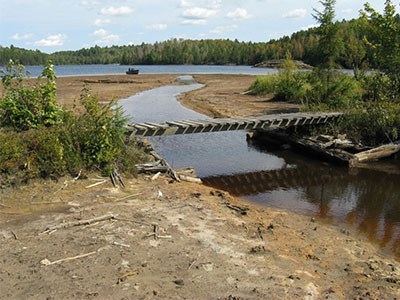Ontario’s updated Mineral Development Strategy offered a few “glimmers of hope” by addressing abandoned mine rehabilitation, but is short on details, contends Mining Watch Canada.
“Over half of the report is just plain marketing facts for the industry,” said Ugo Lapointe, the industry watchdog group’s Canadian program co-ordinator. “There’s no real substance to what this government will do.”
Under a section in the back end of the 25-page Mineral Development Strategy entitled “A safe and environmentally responsible industry,” the strategy acknowledges rehabilitating abandoned mine sites on Crown land as a priority, but does not offer additional details.
The industry watchdog group has argued in the past Ontario doesn’t have the funds necessary to meet its growing environmental liability of mine sites.
While Ontario’s auditor general has estimated operating and abandoned mine site cleanup costs for the province to be over $3.1 billion, MiningWatch estimates the number could be as high as $7.6 billion.
Past mine rehabilitation projects, Lapointe said, such as the cleanup of the Kam Kotia mine site near Timmins, have shown costs can more than double once the rehabilitation work begins.
Lapointe said mining companies operating in Ontario should pay a special levy to finance a province-wide rehabilitation plan.
While mining companies operating in Ontario are required to submit a certified closure plan with financial assurance to cover rehabilitation costs before they operate the mine, Lapointe said the Ministry of Northern Development and Mines does not have the expertise, nor the resources to hold industry to account.
The rehabilitation plans are rubber-stamped, he claimed.
Ontario should copy the Quebec model, he added, where consultations on environmental assessments and mine closure are open to the public.
But ministry spokesperson Julia Bennett responded in an email that mining companies must consult with appropriate Aboriginal communities when they present their closure plans.
“Our provincial Mining Act requires that all companies provide a certified closure plan with financial assurance to cover the cost of rehabilitation prior to the mine going into advanced exploration and production. This process is so the mine site can be decommissioned in a way that protects our environment as well as public health and safety.”




